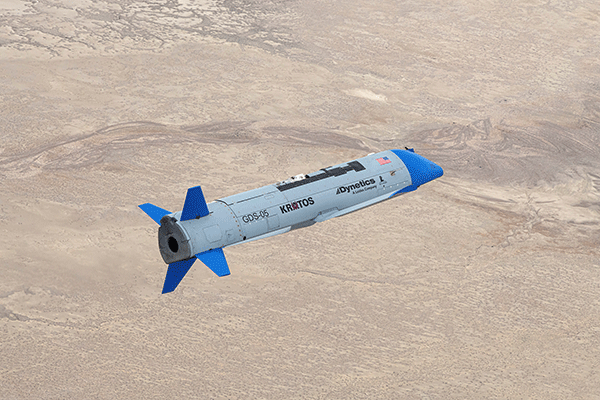
US military researchers needed electromechanical actuators for launching and retrieving an experimental unmanned aerial vehicle (UAV) that is able to overwhelm enemy air defences. They found their solution from Moog. The company’s hardware has played a critical role in a historic milestone in unmanned aviation by successfully launching and retrieving an X-61A Gremlins Air Vehicle (GAV) during the programme’s fourth flight test at the Dugway Proving Ground in Utah. The Gremlins demonstration system flew three GAVs to conduct four individual flight sorties for a combined 6,7 hours of flight, including the 1,4 hour airborne recovery mission. Moog is working with Dynetics in Huntsville, Alabama on the project.

Developed with funding from the Defense Advanced Research Projects Agency (DARPA), the overarching goal of the Gremlins Programme, managed by DARPA’s Tactical Technology Office, is to demonstrate aerial launch and recovery of multiple low cost, reusable unmanned aerial systems (UASs). The DARPA Gremlins programme seeks to develop the ability to use C-130 military aircraft to launch drone swarms of networked and cooperating unmanned aircraft for electronic attack and reconnaissance missions from standoff ranges, and then use other C-130 utility aircraft to recover as many of these drones as possible. This will enable the distribution and management of swarms of sensors in denied environments, while allowing humans to keep a safe distance from adversarial threats.
The programme relies on relatively inexpensive UAVs in volley quantities to saturate enemy defences. The Gremlins approach would launch swarms of UAVs with a variety of surveillance and electronic warfare (EW) payloads from aircraft beyond enemy air defences, and then recover surviving UAVs when they have completed their missions. It is designed to integrate with most existing strike, reconnaissance and cargo aircraft.
After a series of successful flight tests designed to collect data, the Gremlins Air Vehicles (GAVs) endured a rigorous string of tests on the road to airborne recovery.
Moog’s electromechanical actuation systems provide precision motion control for several elements of the Gremlins demonstration system, including GAV tail fin control, GAV wing deploy, and fin control for the attitude-controlled ‘Bullet’ which is a key element in the recovery system. These actuation systems have been developed in a highly collaborative environment with Dynetics to achieve the rapid integration and flight test schedule that is expected for DARPA programmes.
The solutions leverage previously flight-qualified elements and commercial off the shelf (COTS) components, striking a unique balance between reliability and cost that is essential to all successful programmes. The electromechanical actuation system design allows for multiple sorties, enabling Dynetics to meet the critical goal of 24-hour refurbishment for return to flight.
The idea is to design UAVs that are inexpensive enough so that occasional losses would not compromise the overall mission. Furthermore, the drones would communicate and cooperate with one another, so surviving drones could assume the roles of those unmanned aircraft lost during the mission.
The GAVs are the actual unmanned aircraft launched from wing pylons of existing aircraft, such as a C-130. They are low cost, modular, reusable ‘trucks’ that operate individually or with coordination in larger quantities, and require minimal human supervision to operate.
Moog has been providing precision steering controls to weapons programmes for 70 years and has been a leader in the transition from hydraulic and pneumatic actuation to robust electromechanical actuation technologies. “Our development of application-specific systems over the last several decades has resulted in an extensive portfolio of flight-proven solutions,” said Mike Brunner, Moog missile systems director. “In order to support the rapidly evolving needs of our warfighter, whenever possible we are shifting from the longer timelines associated with the traditional development of unique solutions, and instead, as an embedded teammate, we will work to fully leverage our proven solutions to bring low risk capabilities to our customers at a much faster pace.”
For more information contact Willie Steyn, Moog, +27 12 653 6768, [email protected], www.moog.com
© Technews Publishing (Pty) Ltd | All Rights Reserved